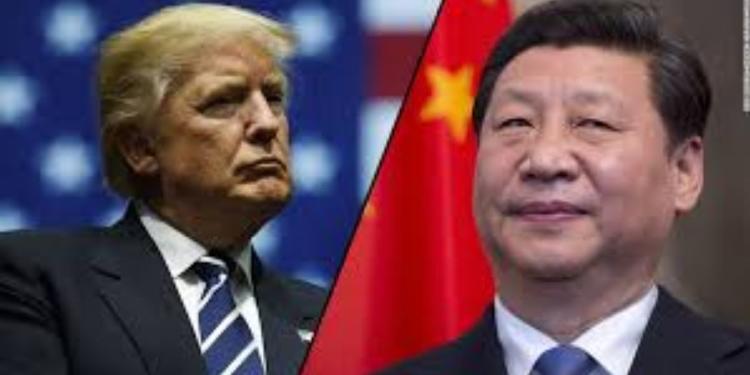There couldn’t be a more apt example of a fall from grace, than that of the Chinese stock market. Chinese stock market has witnessed losses in excess of 30% since the onset of 2018. It unsurprisingly was also the worst performing market in 2018 and Donald Trump had a major role to play in it.
It is no secret that China has in past and present exploited the intellectual property rights to gain undue advantages, especially when it comes to the transfer of technology. USA’s love affair with China started after the Cold War and suddenly aiding China’s economic rise became a matter of national interest.
China through the USA gained entry into prestigious organisations like the World Trade Organization. The USA held hope that as China became prosperous, it would also pursue economic and political liberalization which was underlined by former US President Bill Clinton when he envisioned a China, which will have “a future of greater openness and freedom for the people of China.” Needless to say, this was not the case and in fact, The Communist Party of China only tightened its grip on the nation. The trade pacts were heavily skewed in favour of China and it was not long before it started challenging the position of USA as the World’s foremost superpower.
Barack Obama failed to act on the Chinese aggression and the subsequent militarization in the South China Sea, a corridor through which one-third of global maritime trade passes, while arguing that the World had much to fear from a weakened and threatened China than a rising one.
Donald Trump had made it clear in his presidential campaign, that if elected President, he would seek a fair trade deal with China and the current status-quo would end. By embarking on a trade war with China, he is now trying to renegotiate the trade pact with China. It all started with the USA slapping a tariff on $34 billion of Chinese goods which went into effect on July 6 and has seen the two countries engaging in a tit-for-tat tariff, which now applies to goods totaling close to a whopping $300 billion. China is already facing the heat from this trade war as it recorded a GDP of 6.5% in the third quarter, its lowest since the aftermath of the 2008 financial crisis.
The longer this trade war drags, more will be the losses for both nations. While the USA too will be impacted economically but unlike China the Donald Trump led USA stands to lose more politically rather than economically. This trade war couldn’t have come at a worse time for China as it is increasingly unprepared to take the USA head-on for tit-for-tat tariffs. China’s rapid growth in the past decade is owed to its rapid investment in infrastructure but it came at a cost. The cost of rising debt burden on the Chinese economy. Just as Chinese authorities were helping the country move towards a more sustainable model of growth by basing the country’s economy on its rising consumer class rather than investments in infrastructure, in an attempt to clear its mountain of debt, the tariff has acted as a death knell to the country’s attempt at deleveraging. As China tries to come to terms with the trade war, it is forced to loosen its grip and infuse its market with liquidity which is evident from the sanctioned cuts on reserve requirement ratios for banks which in turn ensures that banks have more money to lend out and hence end up raising the debt.
It is increasingly clear that China’s deleveraging has been halted which might prove disastrous for the country. It is estimated that the pause to remove debt, will increase the debt to GDP ratio by 12.3 percentage points to a whopping 274.5 per cent by the end of this year. China’s $10 trillion dollar shadow banking system will only worsen the health of its economy with the possibility of people getting credit through it and causing a leakage in its economy.
Another factor that can threaten to plunge the Chinese market further into the bear market territory is the forced sale of company shares. It is a common practice for Chinese companies to use their shares as collateral for loans, but with falling share prices and economic slowdown, the companies are forced sell their shares so as to maintain a certain level of balance in brokerage accounts. The economic slowdown has led to shares worth about 4.18 trillion yuan put up by various companies as collateral for loans amounting to about 11% of the country’s stock market capitalization. At present, the stocks of 600+ companies have fallen to the level wherein they would be forced to sell their shares.
China was once famed for its dirt cheap labour which saw many companies migrate to the land of the dragon in hopes of availing cheap labour. However, that is a thing of the past as China is undergoing the phenomena of “Lewis turning point”. This point is a situation in which the excess labour trapped in agriculture shrinks, pushing wages higher and ultimately eroding the country’s competitive advantage in labour-intensive industries. China’s labour has now become more expensive than India, Indonesia and Vietnam. India’s rapidly growing economy and low labour costs is yet another headache for the country.
The dragon picked up a war it couldn’t afford to fight and is now paying for it. China recently announced the lowering of tariffs on 1,585 products which cover metals, textiles, minerals, machinery and electrical equipment, goods which have all been the target of US tariffs. This move has brought down the overall tariff level down to 7.5% from 9.8% last year. It is increasingly looking likely that the USA will win the trade war especially on the back of China cutting tariffs on most imported vehicles, auto parts and medicines.
While no country can afford to let the trade war drag on, without bleeding out their respective economies, but it’s an effort to finally tame the dragon and make the trade game a fair one for everyone. While this might be a little too late as China has already gained significant benefits from the skewed trade deal, but if Trump manages to coerce China to renegotiate the deal, it would be one the greatest achievements of his Presidency.


































